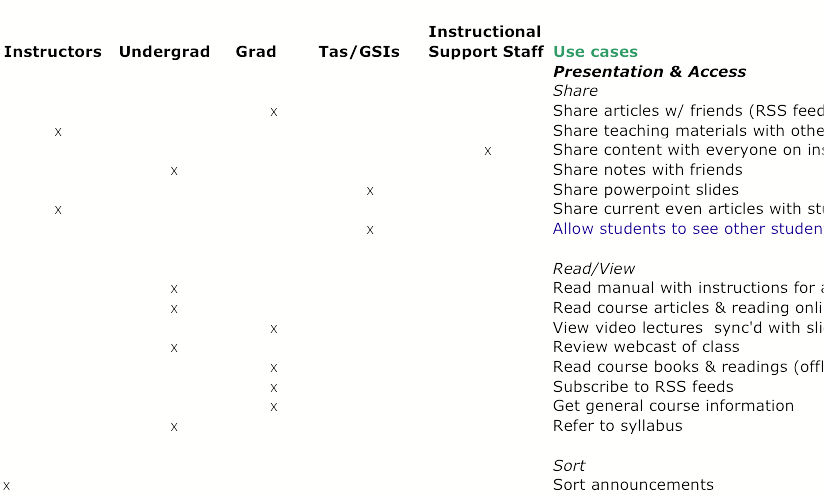
See all affinity diagrams...
Affinity diagramming is a great way to synthesize and categorize large amounts of data by finding relationships between ideas. We tend to use them often for making sense of user research data. |

From: http://www.mindtools.com/pages/article/newTMC_86.htm
Affinity diagrams are a great tool for making sense of large amounts of information and alleviating information overload. Our design team uses them often. You can also have users create affinity diagrams in participatory design activities like card sorting which is great for defining information architecture.
According to the folks at Mindtools.com (http://www.mindtools.com/pages/article/newTMC_86.htm), Affinity diagrams can be used to:
- Draw out common themes from a large amount of information.
- Discover previously unseen connections between various ideas or information.
- Brainstorm root causes and solutions to a problem.
Affinity diagrams can be used for almost anything from project definition to analyzing product evaluations and everything in between. These are just a few examples of when we most often find ourselves using them. Anytime you are struggling with information overload, think about doing some affinity diagramming to help you make sense of it all. It's a great way to get organized and find meaning from any sort of brainstorming activity.
Define information architecture
Make sense of user research
Analyze product evaluation data
Product Definition
We tend to use post-it notes and either the wall or large pieces of post-it note easel paper. The easel paper works great if you might need to move your subgroups around. Affinity diagram basics:
We did contextual inquiries with a few dozen people in Higher Education to understand how they manage their content around teaching and learning. The sessions were held at several different universities and session facilitators and note takes were housed at UC Berkeley and the University of Toronto. There was no budget to get us all together so we had to analyze our research across the miles. We completed a number activities and created several models including affinity diagramming. We used affinity diagrams to understand the variety of current and future activities our research participants showed us and told us about.
We literally had 100's of individual ideas to collaboratively make sense of. Here's what we did:
1) Made summaries of notes for each participant
2) Identified current and future use cases in the raw notes and wrote each of these on post-it notes
2) Shared summaries and asked each team member to review
3) Used video to connect the two locations
4) Talked through each post-it note as a group and began placing them in groups on the wall
5) Labeled the groups of activities

See all affinity diagrams...
6) Used results to create a Use Case Frequency Matrix (full matrix available on content management research models page)

For more details on this project, check out the presentation given at the Sakai 2008 Paris Conference (.zip).